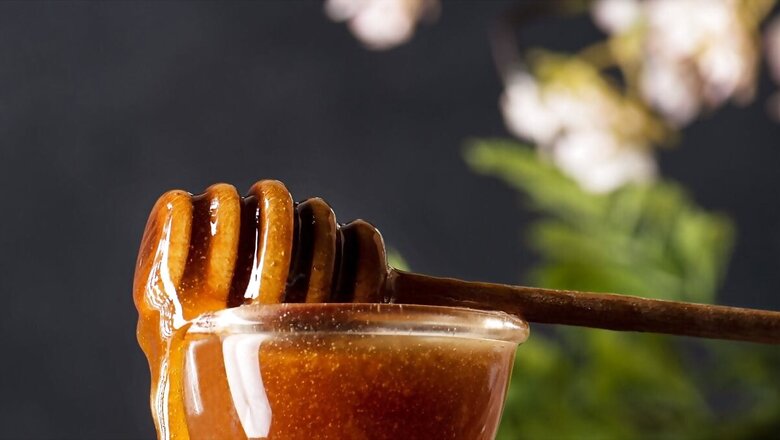
views
Aotearoa New Zealand is a land of rich culinary traditions, where indigenous ingredients and seasonal delicacies take center stage. From the tangy sweetness of feijoas to the briny flavor of Bluff oysters, the country’s diverse landscapes yield a bounty of unique flavors. These iconic seasonal delicacies offer a taste of New Zealand’s natural beauty and cultural heritage, inviting food lovers to explore the vibrant and evolving culinary scene.
Harakeke (New Zealand flax) – February – March
In modern cuisine, harakeke seeds are prized for their unique flavour and nutritional benefits. Derived from the endemic New Zealand flax plant, these seeds find their way into a variety of culinary dishes, enriching everything from salads to seasonings to ice cream. With a history deeply rooted in Māori culture, harakeke not only contributes a distinctive flavour profile and nutty taste, but also showcases New Zealand’s rich indigenous flora, offering chefs a versatile ingredient to innovate with in contemporary dishes.
Bluff Oysters (tio para) – in season from March to August
At the southern tip of New Zealand’s South Island lies a national treasure celebrated for its delicate flavour and revered seasonal harvest. Bluff oysters are a culinary delicacy celebrated for their plump texture and briny-sweet flavour. This seasonal treasure, available from March through August, marks a highlight in Aotearoa New Zealand’s gastronomic calendar. The annual Bluff Oyster and Food Festival in May draws seafood enthusiasts from far and wide to indulge in freshly shucked oysters paired with local wine and beer.
Feijoa (mamaku) – in season from April – June
Feijoa, also known as pineapple guava, is a tropical fruit prized for its aromatic fragrance and tangy-sweet flavour. Ripening from April to June, feijoas feature a vibrant green skin and soft, juicy interior that lends itself beautifully to desserts, jams, and even wines during its short and sweet season.
Blue cod (Rāwaru) – in season from April – September
Endemic to Aotearoa New Zealand’s South Island coastal waters, blue cod is prized for its delicate, salty-sweet flavour and light texture. Renowned for its versatility, this sustainably wild-caught fish is celebrated by local and international chefs alike. Whether served raw in ceviche or as the star of classic fish and chips found in many towns across Te Waipounamu, South Island, blue cod shines in both traditional and contemporary dishes.
Kawakawa (endemic shrub) – in season May – September
Also known as the “New Zealand pepper tree,” Kawakawa is a small evergreen shrub with heart-shaped leaves that impart a peppery flavour. Valued for both culinary and medicinal uses, Kawakawa leaves are used to infuse oils, season meats, and add a unique twist to dishes, showcasing Aotearoa New Zealand’s rich indigenous flora in gourmet cuisine.
Crayfish (kōura) – in season from June – November
Aotearoa New Zealand’s rock lobster is a prized seafood delicacy known for its sweet, succulent meat and firm texture. There are two species of kōura found only in New Zealand. Often enjoyed simply cracked and fresh, or grilled with garlic butter, crayfish is a favourite delicacy among top chefs across New Zealand, and just as easily found at local seafood kiosks along the Kaikōura coast. While they are sustainably harvested throughout the year, fewer crayfish are caught between February and May when they shed their shells and grow new red scales, and the largest catches are landed in late spring.
Pāua (endemic abalone) – in season year-round with restrictions
Aotearoa New Zealand’s black abalone, known as pāua, is a prized shellfish celebrated for its vibrant blue-green shell and tender meat. Found clinging to coastal rocks around the country, pāua is sustainably harvested year-round under strict regulations to protect its population. Its flesh is delicately flavoured and often used in traditional Māori cuisine or showcased in modern dishes, such as pāua fritters or seafood chowder.
Whitebait (inanga) – in season from September – November
Whitebait, tiny translucent fish found in Aotearoa New Zealand’s rivers and estuaries, is a seasonal delicacy celebrated for its delicate taste. The fleeting whitebait season from September to November marks a culinary pilgrimage for those eager to savour these delicate morsels in traditional fritters served with lemon, lightly seasoned and cooked to highlight its fresh, sweet taste.
Pikopiko (endemic fern) – in season from September – November
Pikopiko, an edible herb featuring tightly coiled ferns, are best harvested in spring when they are at their most tender and flavourful, resembling a cross between asparagus and green beans. Harvested sustainably by adhering to traditional Māori practices, chefs ensure minimal environmental impact by gathering only what is needed. Pikopiko has a delicate, earthy flavour that can be enjoyed fresh or pickled, adding texture and depth to salads and savoury dishes. The Pikopiko was one of the foods traditionally eaten at Matariki feasts.
Kina (sea urchin) – in season year-round with restrictions
Kina is an endemic sea urchin and delicacy prized for its rich, creamy roe and briny flavour. Found along Aotearoa New Zealand’s rocky coastlines, kina is enjoyed fresh and raw, or incorporated into dishes to highlight its unique taste and texture. Recognised for their hedgehog-like appearance, kina contain a fleshy orange-yellow edible roe, and at the end of its life, a kina will lose its spikes, leaving behind a beautiful green globe-like shell often found on Aotearoa New Zealand’s beaches.

















Comments
0 comment